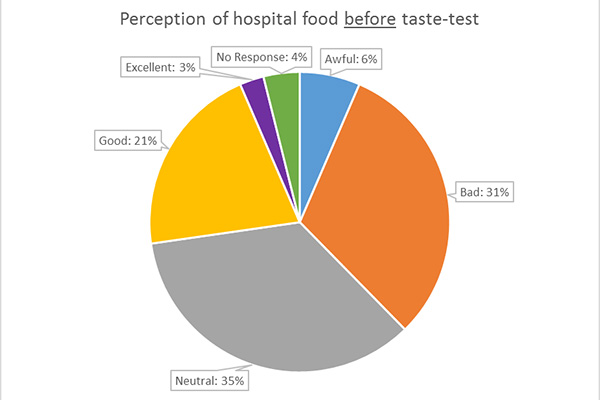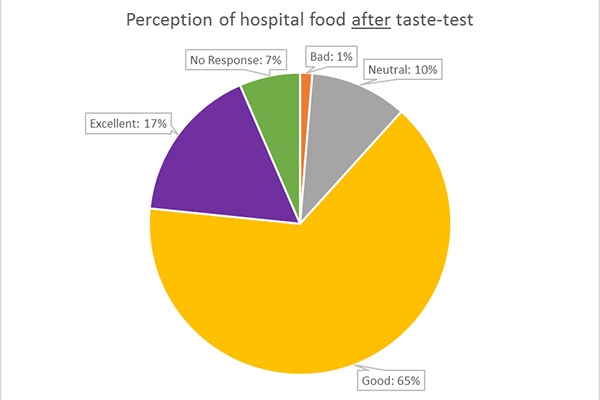When I was younger, certain foods seemed “yucky” to me – brussel sprouts, for example– even though I’d never tried them. I couldn’t explain why, but there was no way I was going to give up prime plate real estate for even a single brussel sprout. Plus, my friends were very vocal about their own dislikes so that didn’t entice me any further.
Now that I work in the field of food, I notice this attitude a lot when it comes to hospital food; old stereotypes about hospital food are still very commonly referred to and people are still vocal about it. However, what we often don’t consider is how what we say might influence what, or how much, patients eat. Food plays a key part in recovery, and hospital food often takes the blame as the reason for patients not getting enough to eat. But where malnutrition is concerned,there’s a lot at play and how we talk about food may be a stepping stone to lessening its impact.
What is ‘malnutrition’?
Malnutrition is broadly defined as too little or too many nutrients being eaten. In the hospital setting, we are most concerned with too little being eaten, regardless of weight.
Did you know?
Canada has a Malnutrition Task Force! Their research from Canadian hospitals shows:
- Almost half (45%) of patients admitted to hospitals are malnourished when they arrive.
- Patients who are malnourished have longer hospital stays.
- Patients who are malnourished are more likely to be re-admitted within 30 days of being discharged.
The Canadian Malnutrition Task Force hosts an annual Canadian Malnutrition Week in September, with the goal of raising awareness of hospital malnutrition and supporting strategies to overcome it. This year, the theme was ‘What’s on the Menu?’, where perceptions of hospital food were put in the spotlight.
Malnutrition Week at UHNBC
On September 25, 2018, dietitians from Northern Health’s Regional Diet Office and University Hospital of Northern British Columbia visited patient units as well as the cafeteria to offer a taste-test of the lunch meal being served to patients. Our roving carts were stocked with samples of chicken souvlaki, tzatziki, and pita bread. We had some great conversation with staff and visitors, and collected feedback from taste-testers through a brief survey.
Challenging hospital food stereotypes
Like this year’s theme for Malnutrition Week, our goal was to draw attention to the importance of food and nutrition in the health and recovery of patients. We wanted to challenge staff and visitors to consider their roles in encouraging and supporting patients to eat, by tackling the stereotypical perceptions of hospital food within hospital culture.
What did we find out?
Most people we talked to were surprised to find out that Northern Health has an extensive Food Services department that:
- Is made up of kitchen managers, superviors, cooks, food service workers, and dietitians from across all of NH.
- Meets every two weeks to discuss menu changes, review patient and staff feedback, evaluate meals/food items, and develop new from-scratch recipes.
From our surveys…
- Total surveys: 77
- Overall improved perceptions pre and post taste-test: 73%
- Overall worsened perceptions pre and post taste-test: 0%
- Overall no change to perceptions or question(s) not responded to: 27%


Now what?
Let’s re-think how we talk about hospital food! The language we use in conversation is a subtle yet powerful way we influence what or how much someone eats. Take a moment to reflect: how likely are you to eat a meal or food item if those around you have made negative comments about it? Particularly in the hospital, these types of comments can have significant outcomes and we likely don’t realize it.
Although we’ve wrapped up Malnutrition Week for this year, improving patients’ food intake is a year-round project that takes teamwork. Whether it’s a family member, a friend, or in your everyday work, what are some ways you can support patients at mealtimes?
Wondering what contributes to pre-admission malnutrition? Population health dietitian Laurel dives into one piece of the puzzle – food security – in an 3-part blog series. Check it out!














Comments